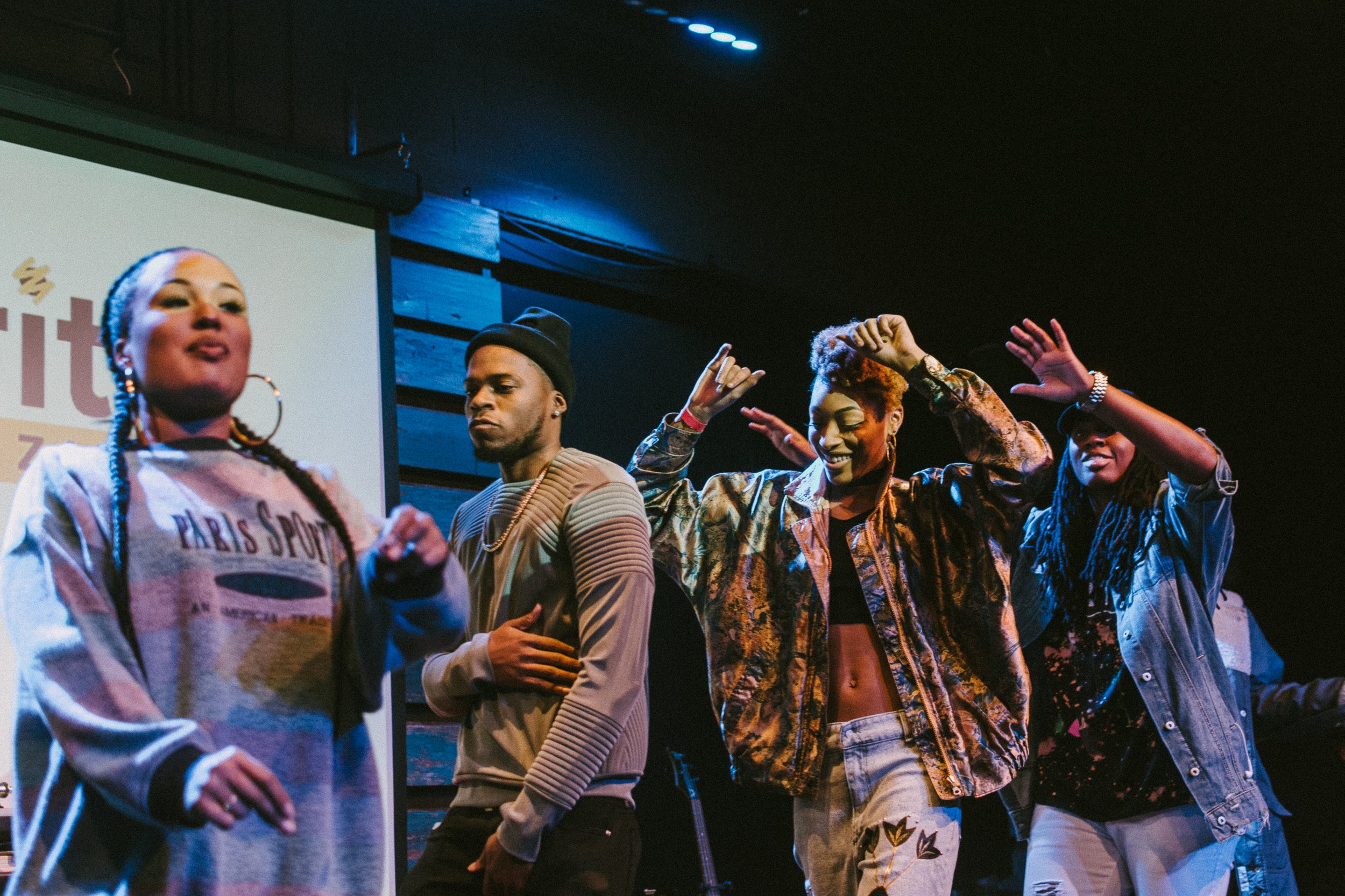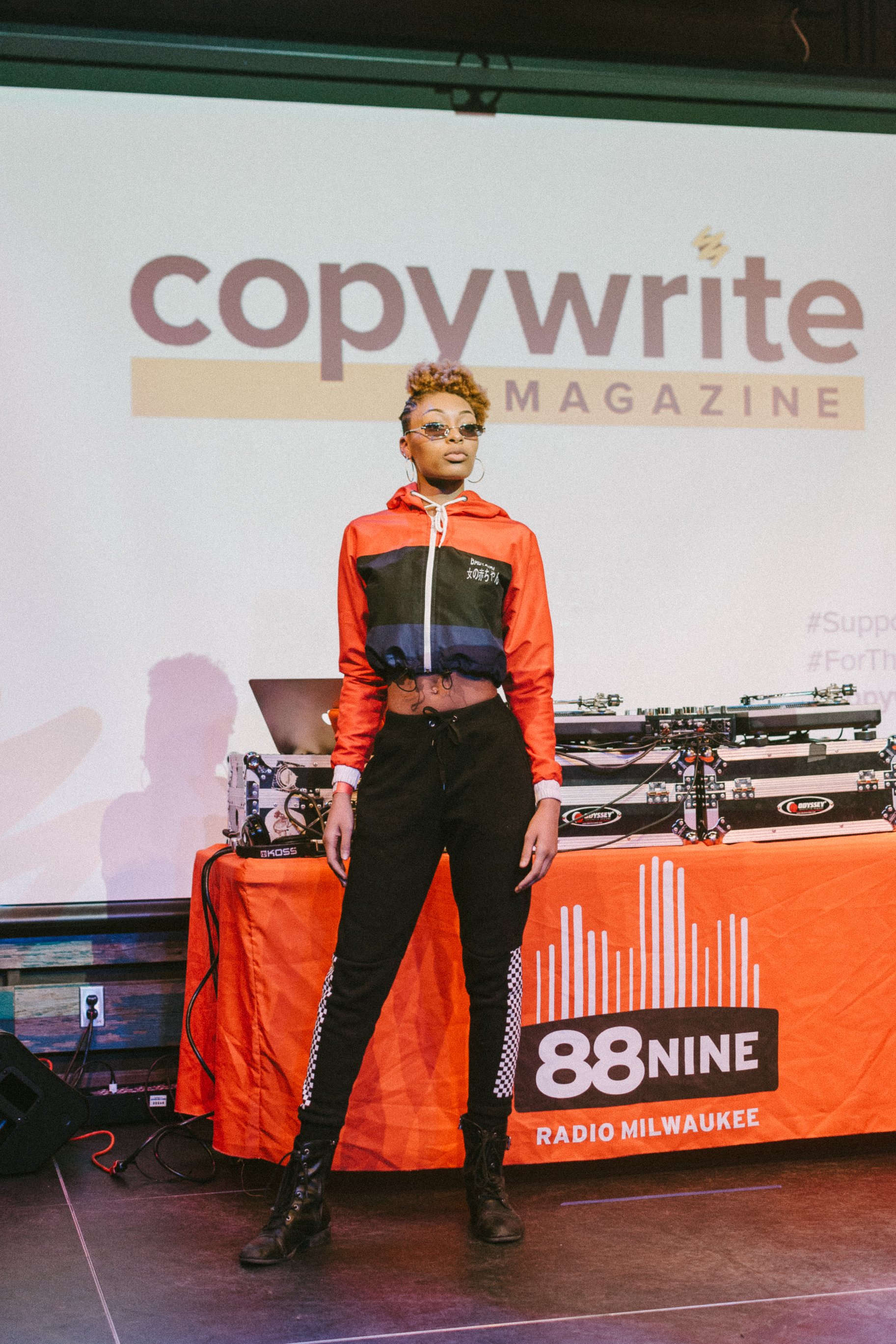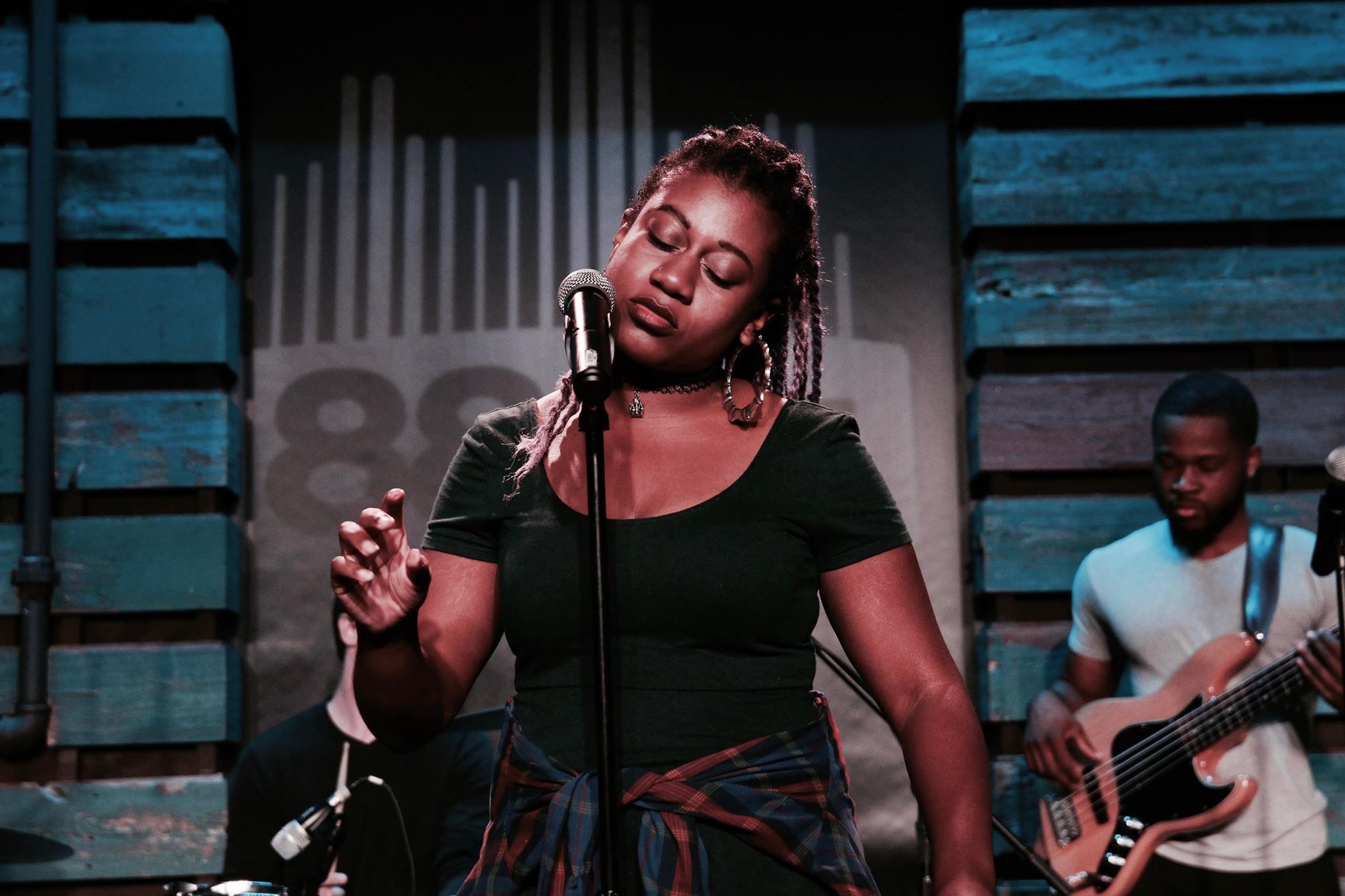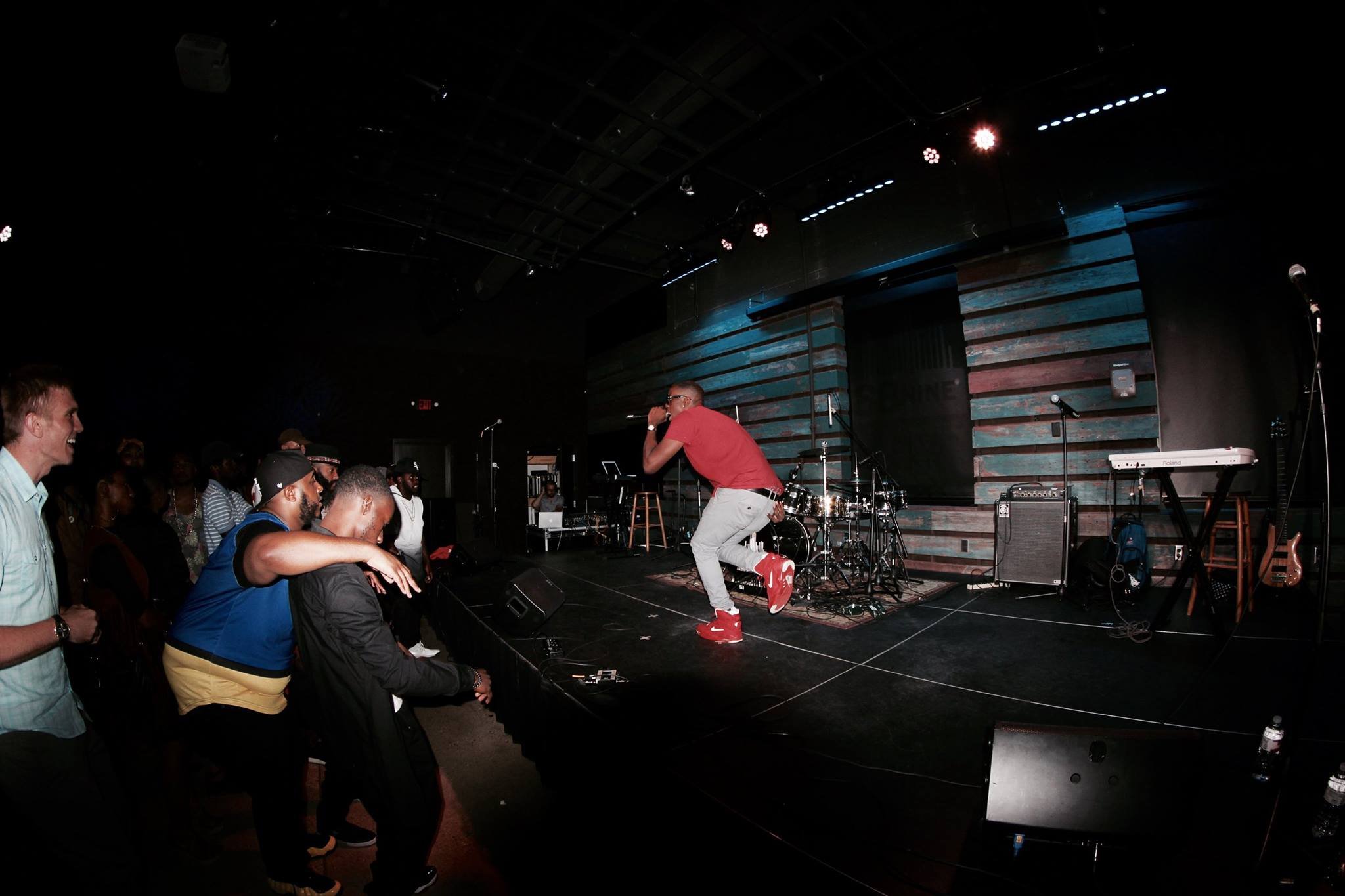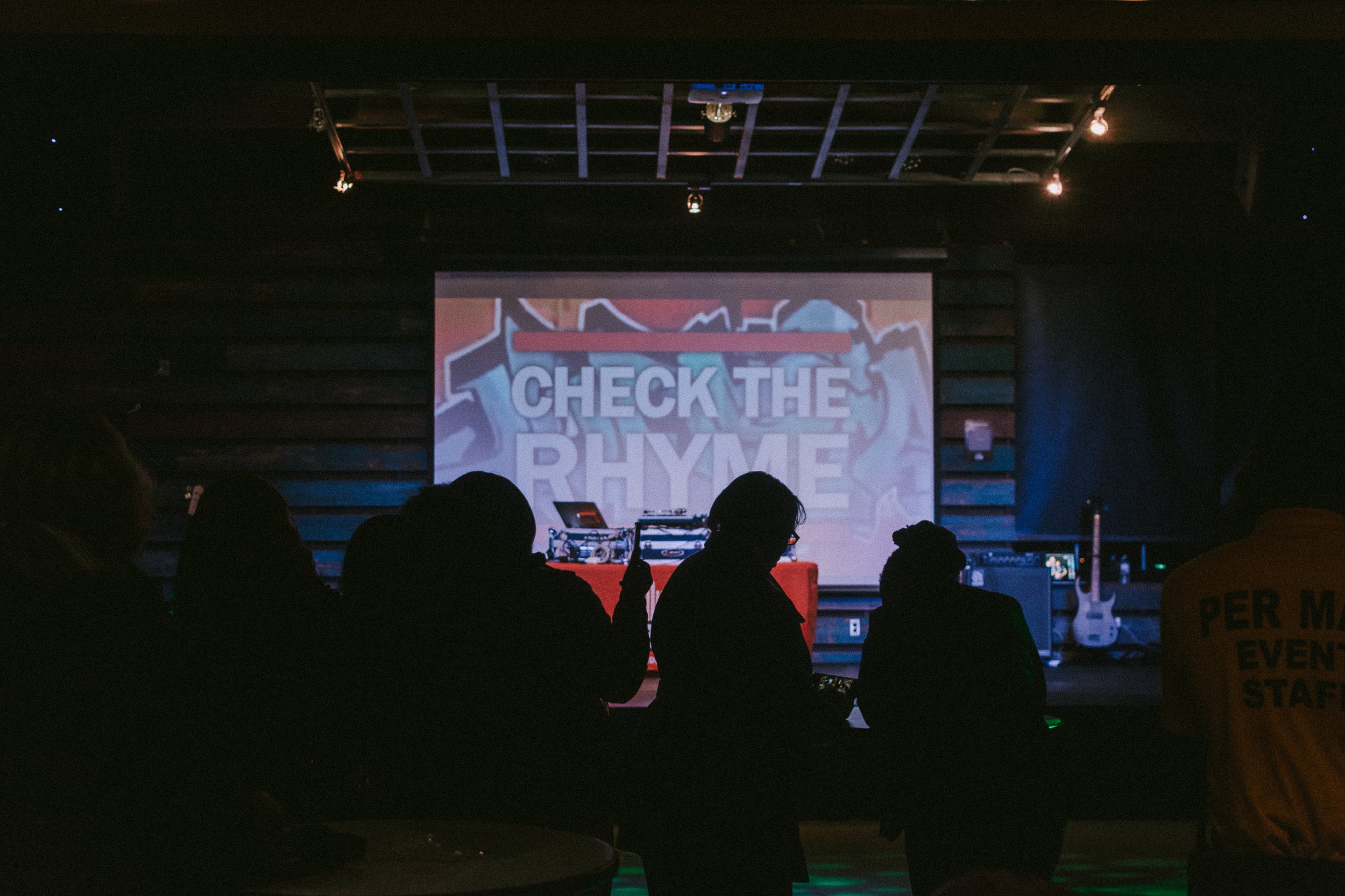Giving BLACK Radio Another Spin | an interview w/ Tarik Moody on Milwaukee's new Urban Alternative station
/Music is a vital part of the Black community. It is the soundtrack to its existence, the beat of its pulse, the rhythm to its soul, the 808 to its heartbreak . . .
[but I digress]
That is why when the news released, this past September, about a new Urban Alternative radio station in Milwaukee, ears perked up. With receiving a $450,000 grant from the Corporation for Public Broadcasting (CPB), the idea of having a station that covers the full spectrum of Black music became a tangible piece of the local media landscape. However, there have been those who question: Is this all hype? Do we need another radio station? Will it serve local Black creatives?
Inquiring minds want to know!
Tarik Moody, Program Director for the new Urban Alternative channel at Radio Milwaukee, chatted with CopyWrite to share a little more insight on how a station like this could be a positive shift in the Black music scene, and not just in Milwaukee.
Retaining the attention of young Black and Brown audiences in the public radio arena has been a struggling task in the last few years. Thus, the CPB has been looking for new formats to engage with that specific demographic. Tarik, with his syndicated program “Rhythm Lab Radio,” and Jordan Lee with his innovative work at 88Nine, began consulting on ways to achieve this in other communities nationally. However, they soon realized this investment in equitable music practices could also be something that Radio Milwaukee could help galvanize, then applying for the grant.
CW: “So we already have Hip-Hop and R&B stations in Milwaukee, why do we need an Urban Alternative one?”
T.M: “We play stuff that they don’t play. We are providing an outlet for those who do not get any love from commercial radio. That is 88Nine proper . . We are taking that to another level with the Urban Alternative channel, on the music side, by taking a lot of artists that you might have heard but you would never hear on commercial stations. That includes championing more and more local R&B and Hip-Hop artists in Milwaukee, other artists that never get on radio but have a huge following, and building support for a variety of artists, like Black artists who play electronic music, and jazz who get no love.”
On the other end, in the same way, 88nine uses its platform to tell stories and amplify the creatives in the community, the new station will use its platform to do the same, focusing on Black creatives in the city.
Images from the /CW vault - activating Black Community at 88nine Radio Milwaukee
Tarik also claimed that adding the Urban Alternative station to the airwaves would give listeners more choices, plus create market-friendly competition that most music heads would welcome.
T.M: “If our station starts to champion certain artists and play them a lot and people start to resonate with that, I am hoping other stations out of competition will be like ‘aye what's going on over here. That’s great for everybody. That’s great for [all] the artist. . . Being an exclusive station that doesn't benefit anybody.”
On a national level, stations that cater directly to Black audiences are limited, including in major markets. Even more so, many of the stations that do feature Black voices are limited by genre and are owned by media conglomerates focussed on the industry machine, not the artist and community. [Source that to CopyWrite Magazine!]
Even with more diverse station options available, how can any radio station compete with the ever-growing digital beast that is now the most popular way to consume music, especially for younger demographics? With interfaces like Tidal, Spotify, and Apple Music, curating your own playlist seems like the norm. With Tarik’s experience as Director of Digital Strategy and Innovation, he knows all too well that ignoring young voices and the digital space is not an option.
T.M: “This project is digital-first. It is a part of its D.NA. I want to make sure that I bring in younger people. My goal is to hopefully find people who want to be in this space who are young, give them a seat at the table to let them grow, and build it beyond what I think. I don’t want [the station] to just be my vision. I want it to be a vision for Milwaukee and the generations to come. It involves bringing in the people and making them a part of the community. That's whether I hire them or we are doing events for them. My goal is to always have my ear to the ground and understand my audience.”
When the station is launched in the summer of 2022, the channel will be accessible not only on 88.9FM from 9 p.m. to 3 a.m. on weekdays and 12 a.m. to 3 a.m. on weekends, but also online, on smart speakers, and through a mobile app, with HD2 and HD3 channels available.
However, even with digital access, an online presence, and more, there is something about radio’s nostalgia and the legacy of the DJ that can not be replaced.
And that’s breaking artists & songs.
T.K: “We want to be that station that does what radio used to do. We want to break artists. It will be a beacon for Milwaukee that other cities are like. I want to listen to this station because they know what's hot. We want to be the go-to station for new artists.”
Before it goes viral on Tik Tok and before it becomes the caption to everyone's Instagram post, somebody has to give it its first public spin… and baaabyyyyyyy it could be right here in our city!
So what might we call this new station on the horizon?
T.K: “We have been working with DeChazier Pykel, an amazing Black designer and graduate of MIAD. He currently works for the Cashmere Agency, which does amazing work. We went through the whole process of probably four to five meetings of talking about names and meanings. And especially about that. We wanted a name that goes beyond just a radio station. Every city has a Blazin’. Every city has a Hot. Every city has a Vibe. We wanted a name that is digital-first, that can transcend media in all different ways. Say we wanted to do fashion, editorial, events or a festival, we wanted a name that is not defined by radio. . .That when someone says it, it could be a lot of things but we all know it's a product of the media platform that is for people like us in the Black community.”
They also shared the process with a diverse group of community stakeholders, who voted on the name and the logo that will be released to the public in February 2022.
[In all transparency, CopyWrite was invited to discuss the possibilities of the new station and vote on its branding assets. We have seen the logo, and its hmmmmm. . . Pretty URBAN steezy.]
CW: “Interestingly, you said it will be a name that ‘transcends radio’, which implies that you're not just stopping at a station. This is bigger than just a radio station. It sounds like it is more a part of a social thread and context of the larger picture.”
T.M: “I have a personal vision. I am still figuring out how to execute it. The home base is Milwaukee, but I think we could be a media platform like Blavity for the midwest that has radio, festivals, events, conferences. . . But I don’t want to lead it forever. I want a young person to take it beyond where I want to. I mean I see a lot of people stay in a position forever. I want to get it to where I think it should be and then I want to find a young person who wants to take it in another direction that I couldn’t even see. I don't want it to be my legacy. I want it to be something that my people can help create and take it further. “
The idea of a media institution where change is welcomed, the Black community is celebrated, the young are heard, and divergent perspectives may culminate seems like an answered prayer. However, the elephant in the room is huge. The Black community is not a monolith, and when it comes to local BLACK music, the factions are split like blue and red bandanas circa the 1980s in South Central LA.
CW: “With inclusivity, there is a lot of talk about the separation in general between the Black local music scene and Black creative scene in Milwaukee. How do you plan on including the voices of those who are absolutely on the periphery of what that is or have been disenfranchised by the radio market and media market when it comes to Black creative making in our city?”
T.K: “That’s a good question. I’m hoping to have those conversations. I am hoping people like [CopyWrite] and other people I have grown to know, that may know these people will give me some input on how we should. I can’t answer that but I know I want to do that. I am hoping to have more of those conversations, formal or informal. I want to figure out how I can help and how [the station] can help. It might be getting their music on the air, it might be hosting events, I don't know what it looks like but I know it's needed. Some leaders think they know everything. I don't know everything.”
He then admitted that there are some scenes in the city, like the Northside music scene, that he has only recently been introduced to. He wants to be informed and is open to bridging those gaps. So if we want this to happen, we must come together as a community and for the lack of a better phrase, “Run it up”.
CW: “How can people stay engaged before the launch? And what should people expect to hear after?
T.M: “The first opportunity to connect with us is when we launch the name. There will be a landing page on the name's website, with a chance to sign up for our email list for future communication and opportunities to connect with us and have conversations with us. This makes sure you are a part of our journey on the way to our launch. Once we launch, expect to hear some things you have never heard before on any radio station in this market and probably in this region when it comes to programming.”
In a climate where our creative scene needs a bit of healing, this Urban Alternative station could be a part of the cure.
Amplify voices.
Listen to your people.
Be a part of the change.
We will definitely be there.
—
/Lexi S. Brunson, Editor-in-Chief


